11 Most Unusual Festivals of India
My motherland, India is home to a diverse culture of indigenous tribes travelled from different parts of the world. Since ancient times they have created a long-lasting impact with modern theories. A deceptive world where the spiritual connection with the almighty has given rise to some of the unusual rituals and festivals. Some of these traditional rituals, despite its weirdness and crazily bizarre events, celebrated with unusual enthusiasm, leave us with a big question. In this article, it has been tried to concise 11 Most Unusual Festivals of India that are strictly followed to restore balance in religion.
Thaipusam Festival, Tamil Nadu
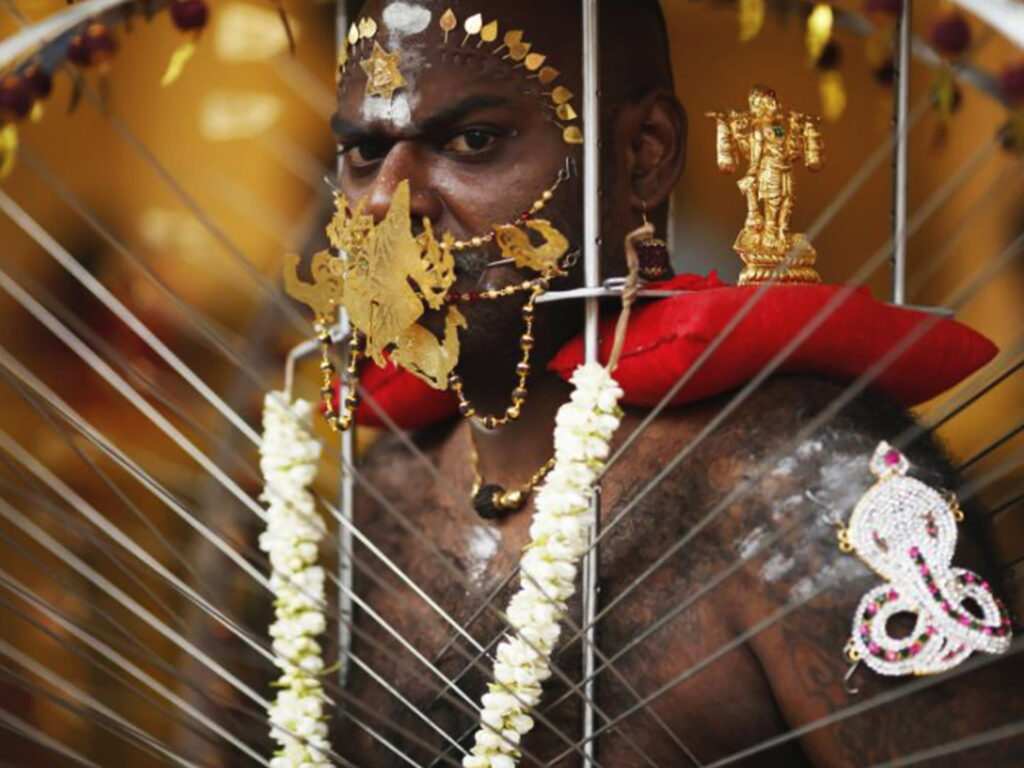
Let’s start our bizarre list with the utmost devotion to revel in divine bliss. Thaipusam/Thaipoosam is celebrated to show the endurance to Lord Murugan (believed to be the son of Lord Shiva). Devotees prepare themselves approx 48 days ahead by spiritual cleansing with prayers and fasting. The festival is famous in South India and other parts of Southeast Asia like Malaysia, Sri Lanka, Thailand and other countries where the Tamil community is present.
What is unusual? On the day of the festival, the devotees perform the rituals and set out for the pilgrimage engaging themselves with the extreme act of religious observance. Some fanatical devotees carry burdens by one the most amazing practice by piercing the skin, tongue or cheek.
Time: The festival starts on the full moon of Tamil month of Thai and continues over 10 days in January.
Venue: Sri Dandayudhapani Temple in Palani
Nag Panchami, All over India
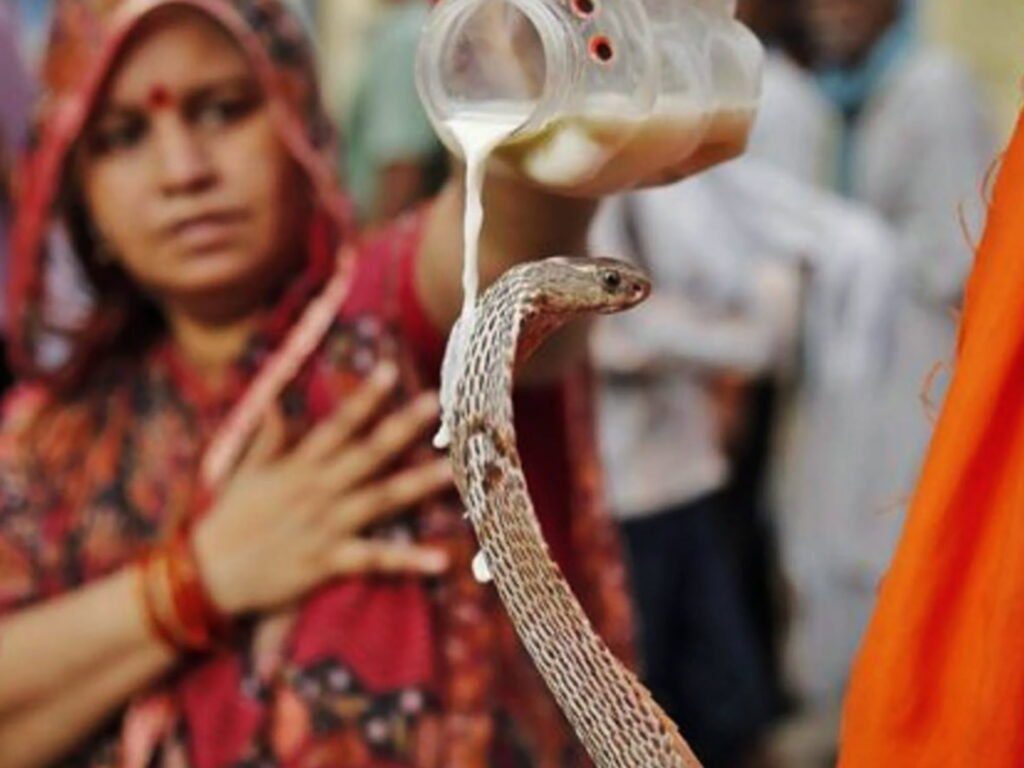
How about a festival dedicated to snakes, Creepy? Nag Panchami isn’t for the faint heart, especially which are dug out of the ground. Nag (Cobra in English) owns a great significance in Hindu mythology, which is often worshipped. The festival takes place during the month of Shraavana (Hindu calendar month) when the monsoon in India is at the peak. The rainwater seeps the hole of snakes which can harm humans on the ground by biting. According to the myth, to protect themselves Nag Panchami is celebrated.
What is Unusual? On this auspicious day. the fear of snakes miraculously turns into blissful devotion. In some of the villages, the devotees indulge with the alive snake. The temple priest sprinkles Haldi-kumkum (turmeric and vermilion) and flowers on their hoods, later they are also fed milk, as the ultimate sign of good luck.
Time: It is celebrated on the fifth day after Amavasya or moonlit-fortnight in the holy month of Shraavana (July- August).
Venue: The festival is celebrated across the country, popularly observed in Bengal, Maharashtra, and South India.
Madai Festival, Chhattisgarh
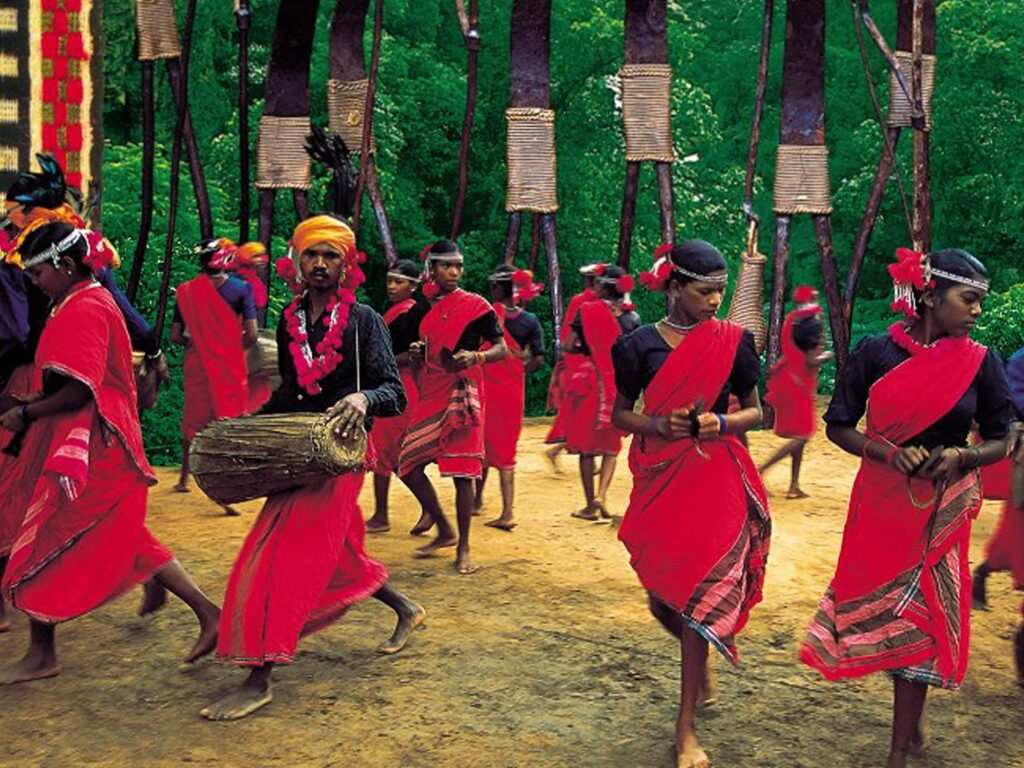
Chhattishgarh is a popular tribal destination known for its major festivals of what is considered as Sanskritik Chhattisgarh. Despite Madai is a popular festival, people from other parts of the country know little about it. During this festival, ritualistic performances with folk dance, music, sacred prayers are dedicated to goddess Kesharpal Kesharpalin Devi. One can also witness vibrant fairs with bright shops having several tribal handicrafts and relish some unique cuisine.
What is Unusual? This is one of the few festivals in our country which travels from one place to another. The festival is also marked with the sacrifice of an animal, usually, a goat which breaks into relishing lavish feasts.
Time: December to March
Venue: This festival starts from Bastar tribal area, then moves to Kanker from where it goes to Bhanupratappur, with few stops in-between at Narayanpur, Antagarh to Bhanupratappur, Keshkal and Bhopalpattnam then finally ends in March to Kondagaon.
Sekrenyi Festival, Nagaland
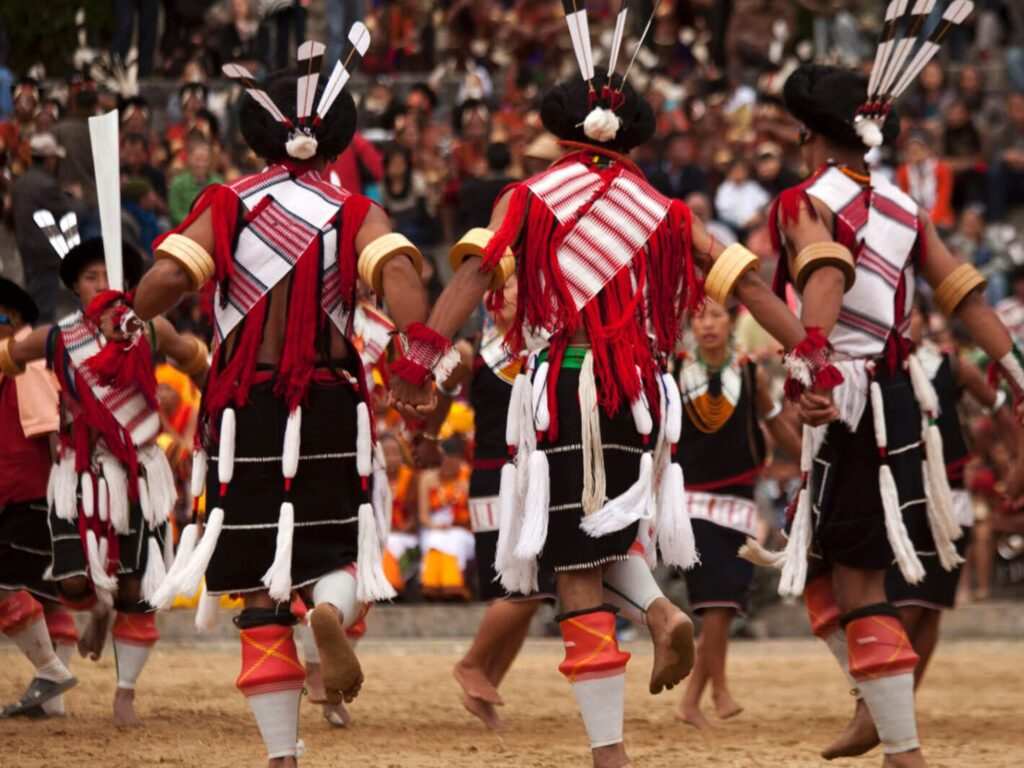
Sekrenyi is a popular festival for Angami tribe of Nagaland. This festival is celebrated for 10 days to eliminate negative energies as well as to renew and cleanse the entire village. This tradition involves a great number of rituals as well as customs respecting nature. It is a festival of purification with feasting, duet songs and folk dance that allows inter-village visits and assures human bonding. The preparations of the festival start two days prior by collecting firewood and hunting animals for the feast.
What is Unusual? One of the highlighting features of the festival is Thekra Hie where young people of the village sit together to participate in traditional events served with the jugs of rice beer and plates of meat.
Time: Sekrenyi Festival is celebrated on 25th day of the Angami calendar month. According to the English calendar its mostly around February.
Venue: Kohima, Nagaland
Agni Keli, Karnataka
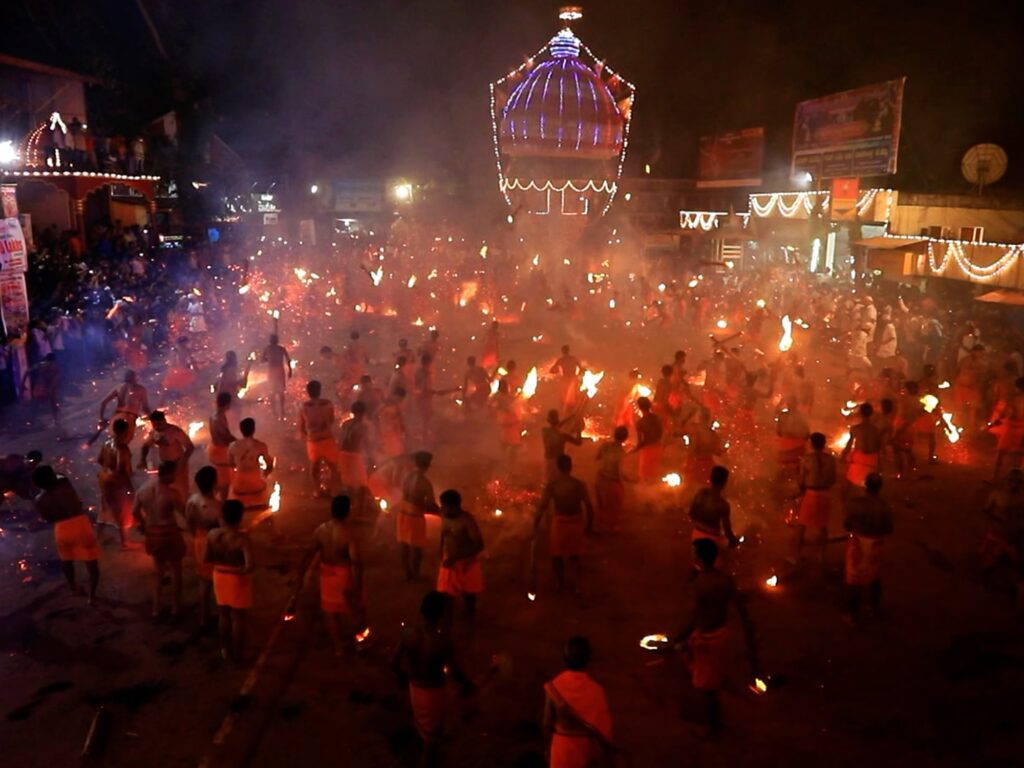
Though fire means danger, it is also the symbol of the festival. Coming back to India’s other unique festival, here a village plays with fire every year. Devotees gather at the temple of Kateel Durga Parameswari, honouring Her, depicted as the goddess of war. It is celebrated over 8 days and features a series of themed performances including the parade of the jewel-decked goddess through the streets. On the second night of the festival, the fiery action attracts thousands of spectators.
What is Unusual? A centuries-old tradition that involves participants throwing burning palm fronds straight at each other. Agni Keli lasts about 15 minutes with flying branches and sparks through the night sky, falling around the participants.
Time: It commences on the night before Mesha Sankramana Day, mostly occurring in April.
Venue: Kateel Durga Parameswari Temple is in Kateel on an island of the river Nandini, about 29 km from Mangalore city.
Lath Mar Holi (Barsana, Vrindavan)
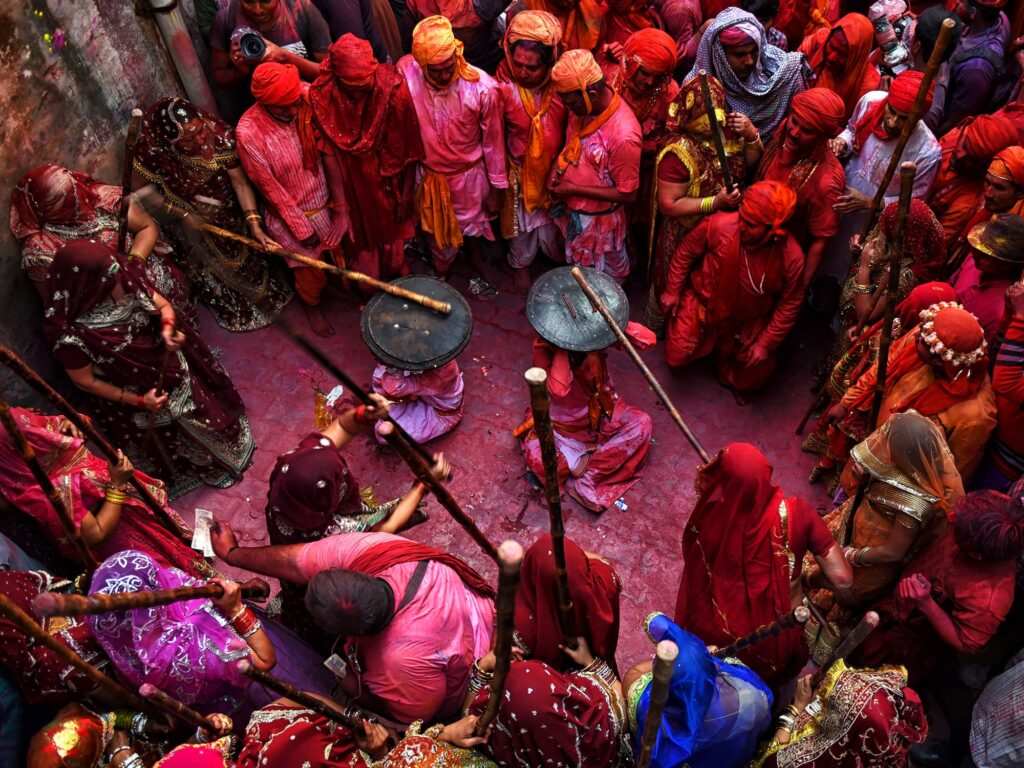
As we know the Holi is a festival of colours, that is celebrated in India with great vigour and enthusiasm. All this sounds so interesting and wonderful. Wait! what if some women chase you with sticks. Sounds terrifying? Well, the unique customs of Lath Mar Holi have attracted tourists and pilgrims from all over the world. In Hindu mythology, Lord Krishna playfully teased his beloved Radha on this very day and angry ladies of Barsana chased the Lord away. As a mark of this event, every year the Lath Mar Holi is celebrated.
What is Unusual? Interesting way of playing Holi, not only with colours but also sticks. As a part of the tradition, men sing provocative songs to invite the women for playfully to beat them with bamboo sticks. The folks try to defend them with a shield and usually stay under the influence of ‘Bhang’. This reflects love, fun and equality.
Time: This celebration takes place a few days before the actual Holi on the last full moon day of Phalgun as the Hindu lunar calendar month marking the spring. According to the English calendar between March to April.
Venue: Nandgaon and Barsana towns of Uttar Pradesh, extremely popular for the celebrations.
Puli Kali, Kerala
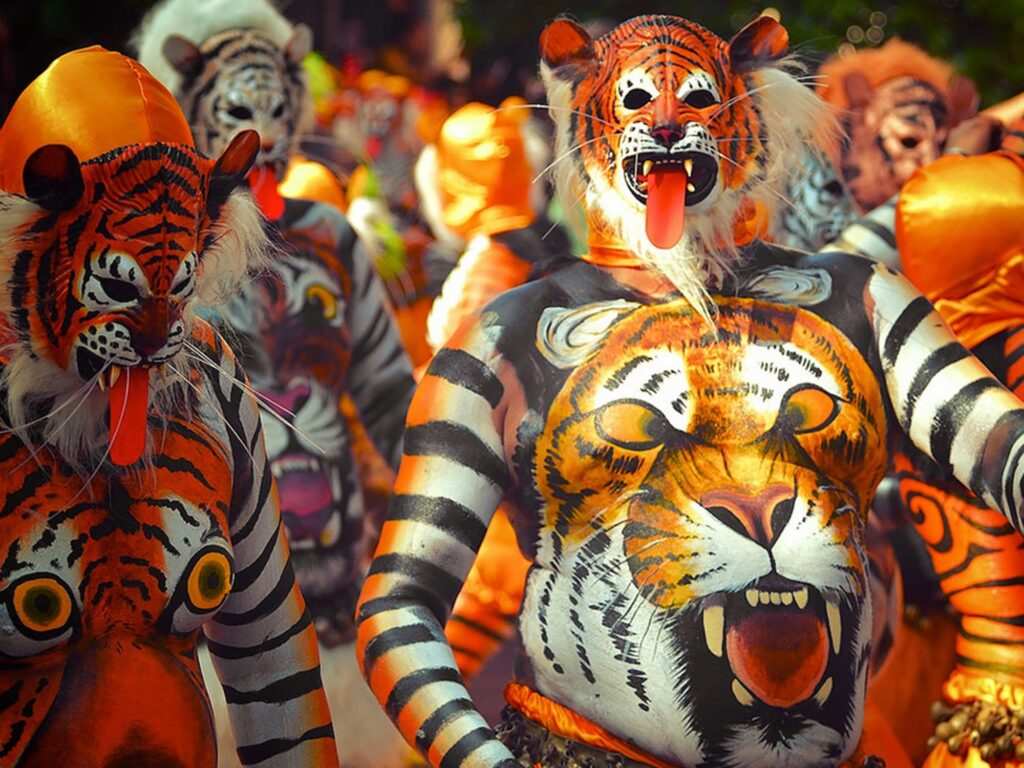
Puli Kali is a peculiar event of the most popular Onam festival in South India. This curious activity originated 200 years back when the Maharaja of Cochin formed a traditional Kerala folk art, dance, music and drama that depicted the theme of the wild and macho spirit of the force. As the name, Puli Kali means “tiger play” or “tiger dance” that is what you can see tigers acting on the street to the beats of instruments like Udukku and Thakil. Every year it attracts people from across the State and the world to view this special event.
What is Unusual? The striking feature is performers dress up as tiger with readymade masks, cosmetic teeth, tongues, beards and moustaches. They enact the roles of the wild beasts while dressed up in such a manner is no easy feat either!
Time: This grandeur is celebrated every year on the 4th day of Onam ( a harvest festival, and falls on the 22nd Nakshatra Thiruvonam in the Malayalam calendar month of Chingam) which occurs in August–September.
Venue: The streets of Swaraj Round, Thrissur.
Hemis Festival, Leh
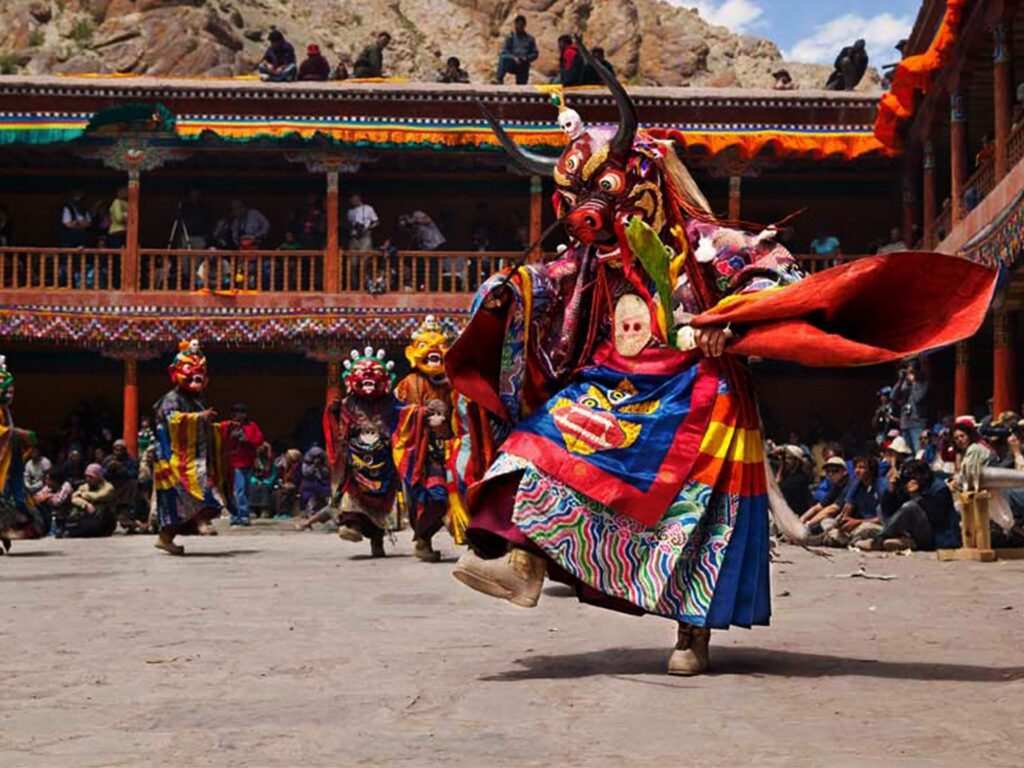
The colourful prayer flag of Ladakh brings an unreasonable smile on the face of everyone, from a child to an adult. The two-day Hemis Festival is a sequence of the most vibrant events you’ll ever come across. According to the legend, Lord Padamsambhav’s conquested on the Ruta demons marked the victory of good over dark forces. This festival commemorates every year as the birth anniversary of Guru Padmasambhava who founded Tantric Buddhism in Tibet.
What is Unusual? The Masked Dance, performed by the lamas is the main highlights of the Hemis Festival. It is a slow dance and each performer wears colourful masks and costumes that depict the legends of the war. The character’s movement on the beats of cymbals, drums, and unwieldy trumpets elaborate the grotesque expressions.
Time: This festival is celebrated on the 5th month of the Tibetan calendar or June-to-July of the English months.
Venue: It is held at the 300-year-old Hemis Jangchub Choling, Buddhist monastery near Leh.
Sume Gelirak Festival, Odisha
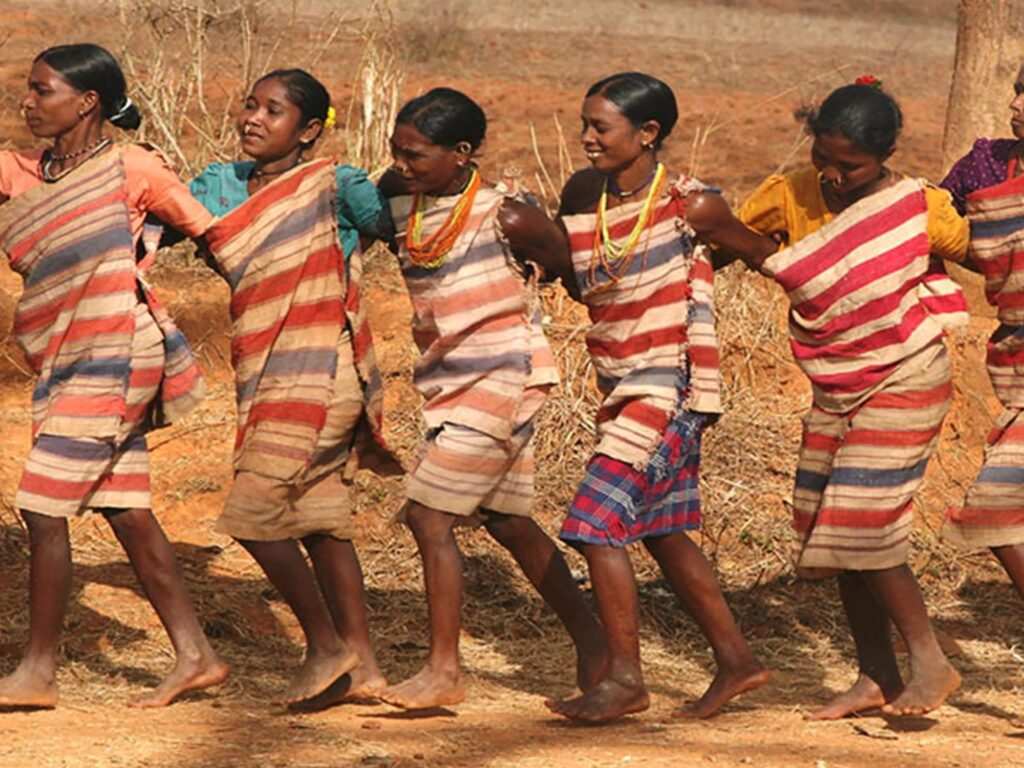
A major festival of Bonda tribe that teaches the importance of love and friendship in one’s life. In reality, the tribe lives a very sequestered life on a hilltop, thus, aloof of the happenings outside their world. The Sume Gelirak festival helps the tourists to dive deep in the cultural richness of one of the tribes of Odisha. The celebration proceeds for 10 days includes a scenario with several ritualistic practices, folk dance and songs in their traditional attire and musical instruments.
What is Unusual? The festival includes a unique style of celebration, a categorised fight for pairs of boys, young as well as and older men stand face-to-face and hit each other with branches of a tree on the beats of the drum. This is also the perfect time for the ladies to find their better life partner.
Time: In the month of Chaitra, the festival is celebrated as the threshing of the rice harvest. It starts on Sunday mostly in January according to the English calendar.
Venue: Koraput, Odisha
Karni Mata Festival, Rajasthan
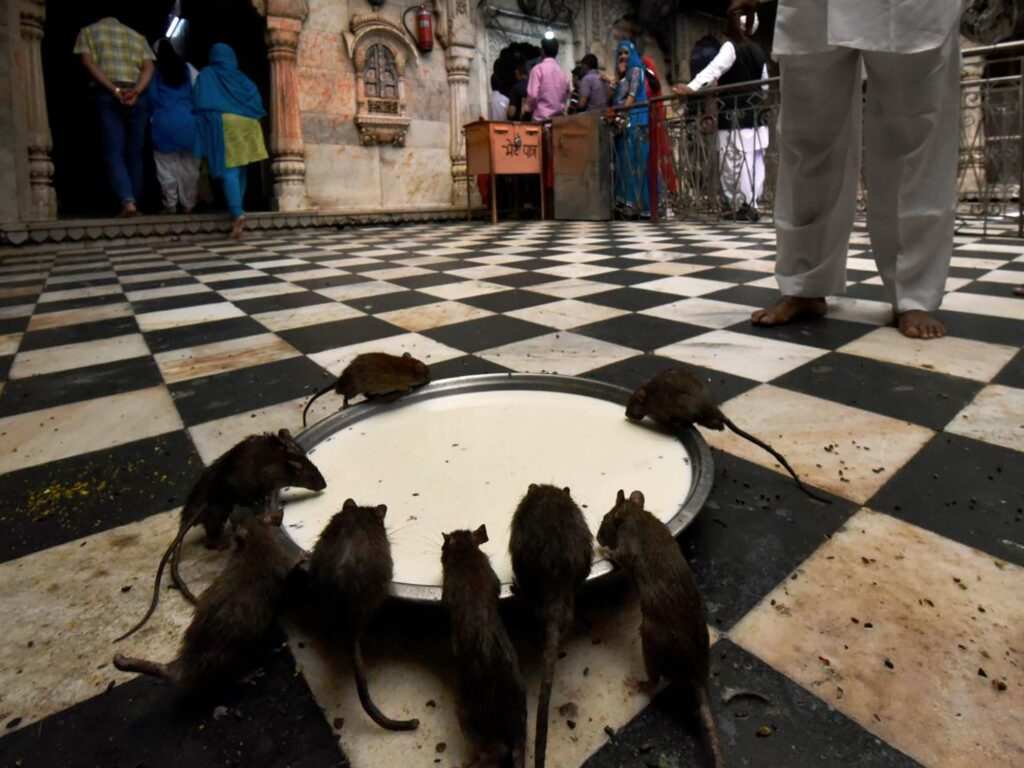
Let’s drive this unusual festivals list to 600-year-old Karni Mata temple which is home to more than thousands of rat. They are considered very sacred and bring good luck. Karni Mata Fair is an interesting attraction for tourist, to get acquainted with the rich religious traditions of the place. As the name suggests, the fair is dedicated to the mystical goddess possessing supernatural powers. On the first day of the festival, special preparations are made in the temple as Goddess is beautifully decorated with the proceedings of Mangal-Aarti and bhog to the deity.
What is Unusual? The temple is also known as Rat Temple of India. Interestingly, rats are considered as “kabbas”, the souls of Karni Mata’s devotees. To seek blessings from kabbas they eat the leftovers of the rat.
Time: The festival is held twice a year during the holy Navratras in the months of March-April (the bigger festival of 10 days) and October-November.
Venue: Karni Mata temple is located in Deshnok village of Rajasthan.
Chau Jhumur Utsav, West Bengal
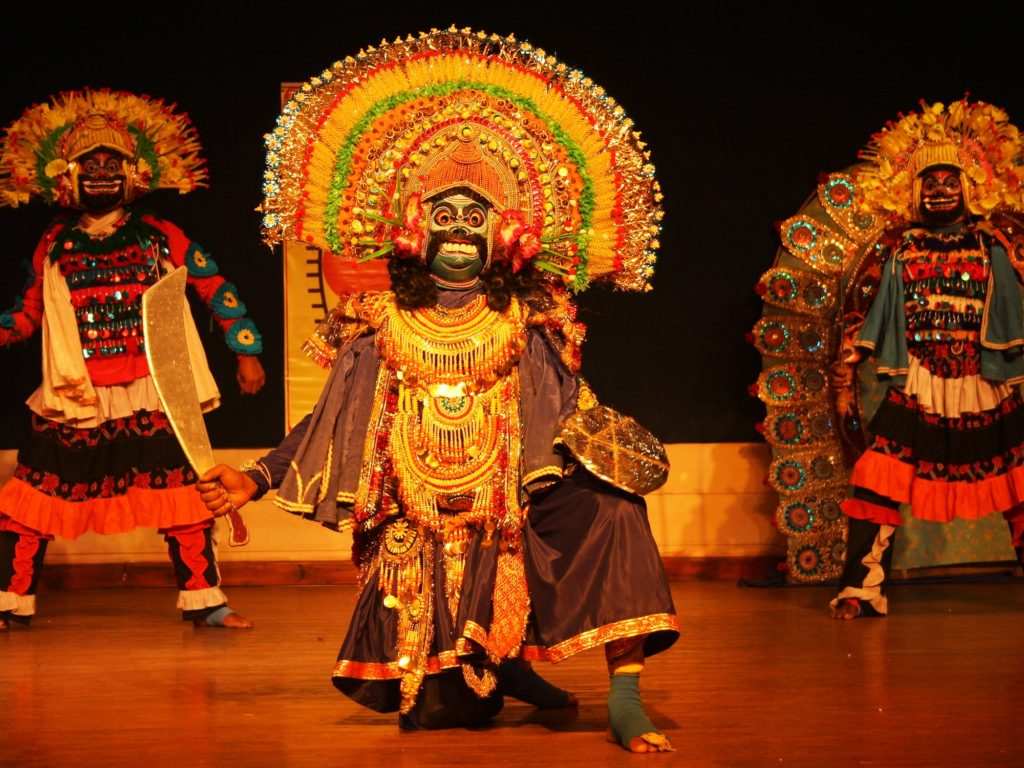
Purulia is the land of the spectacular nature, people, culture and heritage. Chau Jhumur Utsav depicts the rich cultural tradition of the region and has evolved as a major crowd-puller in the region. The festival continues for 3 days with vibrant performing folk art, nearly 3000 artists follow the tradition. The festival is aptly complemented by drums, shenai, reed pipes and other instruments. Besides attending the festival visitors can also see mask making at Chorida Village, 8th-century Jain Temple, visit the Joychandi Hills and trek at Jharnakocha Cave.
What is Unusual? During the festival of Chau Jhumur Utsav, a colourful martial mask dance is performed based on mythological tales that spread moral and ethical ideals. Chhau dance is recorded in the Representative List of Intangible Cultural Heritage of Humanity by UNESCO in 2010.
Time: December
Venue: It is held at the Bamnia School playground of Maldi village of Balrampur in Purulia.

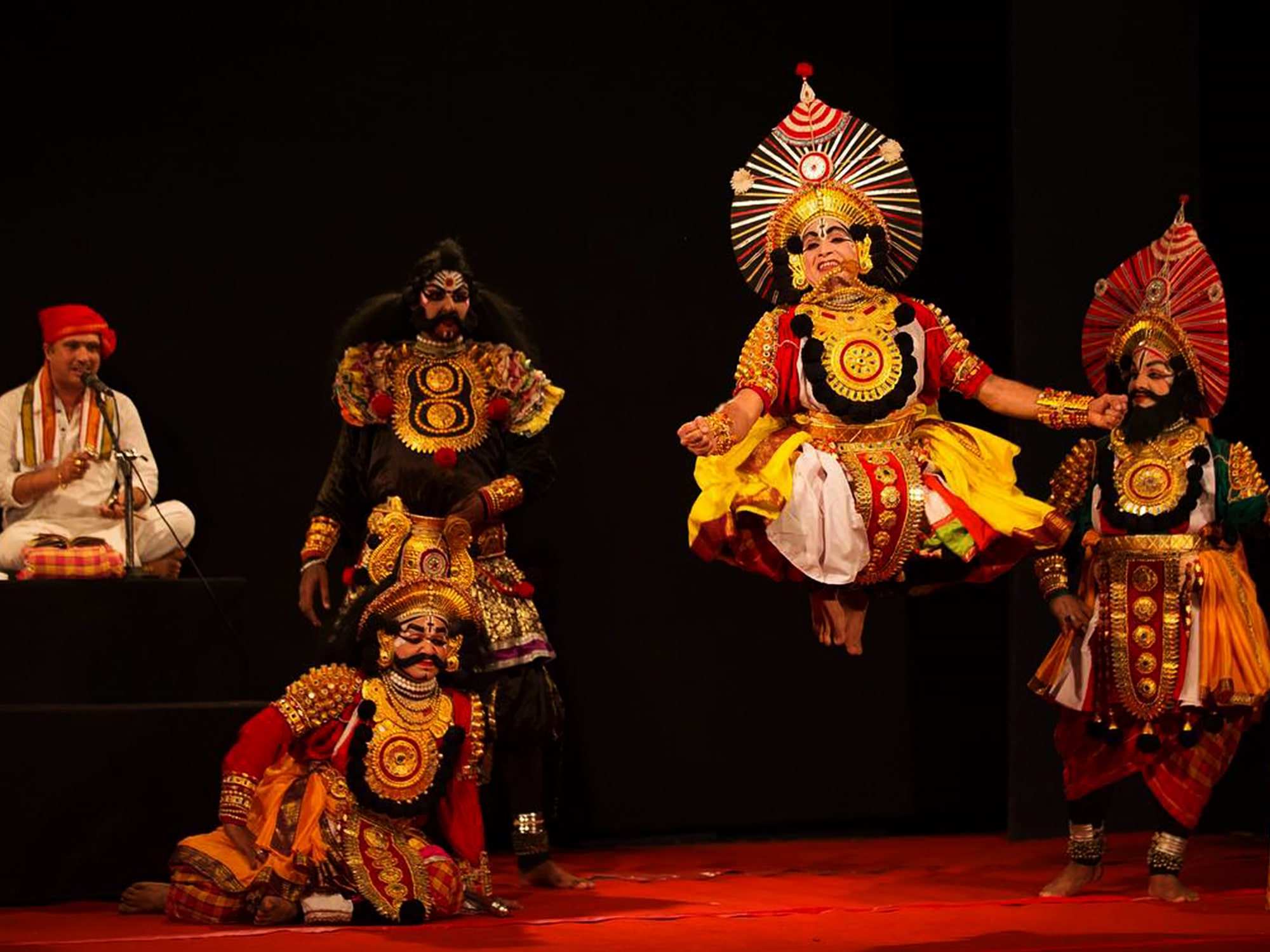
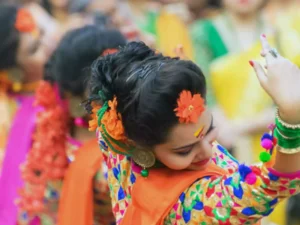
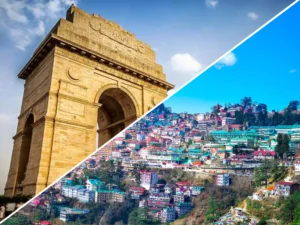
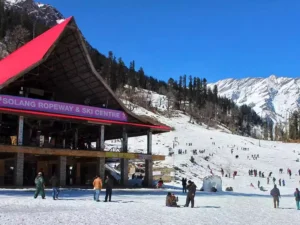
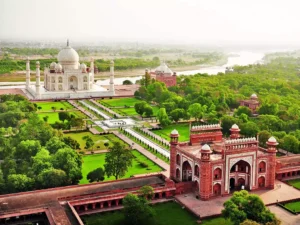

Wow unusual indeed. Grt write up..
Thank You..will try to add more as bonus..!!
Keep tuned..
I attained Karnimata Festival,Bikaneer, Rajasthan.
But in every foot step rat and rat.so I left the place .
Your information is very helpful 😊
The experience itself speaks a lot..thank you for sharing..
a bizarre experience..I guess now rats won’t be your irrational fear..
Nice collection. Appreciate your efforts…
Your love and support have encouraged us..!!